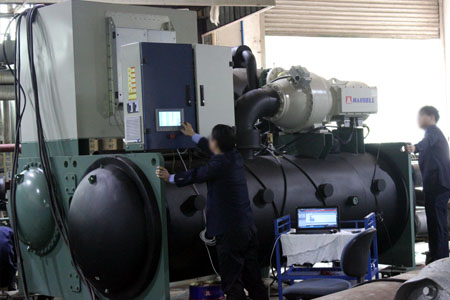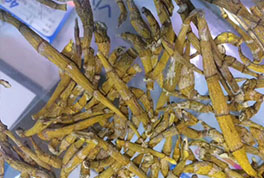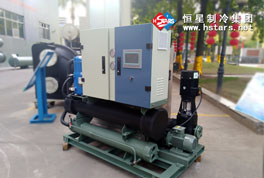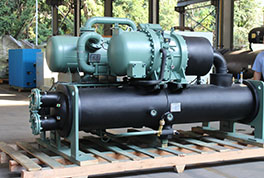After the chiller equipment is installed, manpower needs to be invested in daily maintenance to ensure the normal operation of the equipment, and the monitoring and management of the operating status of the chiller or multiple units has become a tedious task, which not only takes up a lot of manpower, but also consumes financial and material resources.
Therefore, companies that usually use large-scale chillers will use remote control and management equipment, which is not only more efficient, but also low-cost. The following editors and industry friends popularize the advantages of the remote control function of the chiller.
Let’s first look at the Internet of Things remote monitoring technology, which can realize intelligent identification, positioning, tracking, monitoring and management of chillers, achieve centralized control, and greatly reduce maintenance costs. In multiple refrigeration systems, there is no need to view equipment data on site, and the operation tasks of computer and mobile phone on equipment parameters are realized.
View the operating data of the equipment at any time through the mobile application, grasp the operating status of the chiller system, and timely feedback the abnormal operating data of the equipment. It not only meets the requirements of remote monitoring, but also has the advantages of simple structure, high reliability, strong scalability, low cost of use, and strong real-time performance. It is becoming the technical basis for chiller control.
Let's take the chiller provided by H.Stars to customers as an example to understand the relevant knowledge. The remote control communication 485 interface and protocol can be perfectly compatible with the advanced Internet of Things remote monitoring system, helping customers to achieve efficient management of chillers, remote monitoring and data acquisition, and analysis and processing.
Star screw chiller, its remote monitoring system is composed of on-site monitoring system and remote communication. The former can provide the working status information of the chiller when the chiller is running, and realize the detection and control of the water temperature and pressure parameters. It is divided into chilled water system and PLC control. The system has two parts.
The PLC control system can collect the switch signal of the unit, the water temperature signal and the pressure signal, and output the switch signal to control the switch of the unit valve and the operation of the compressor.
The on-site monitoring program usually consists of man-machine interface module, communication module, database module, etc., and undertakes on-site monitoring and control.
The human-machine interface module displays the real-time status of each data collection point, so that the equipment operator can intuitively understand the system status. The alarm information display system can observe the user-defined upper and lower limit values of the alarm, and the control parameter setting can be used to set the PLC parameters to reduce the probability of misoperation.
The communication module can communicate with the PLC and the remote monitoring program to check whether the on-site monitoring program requests to modify the control parameters. When a communication failure occurs in the communication failure processing part, it can automatically deal with it accordingly.
The database module includes the chiller operation information record, operation data, and switch status, so that the operator can obtain the previous operation status of the system at any time and provide help for future control.
The remote chiller control can realize the control of the industrial production process. Through the experiment and the actual engineering inspection system, it can meet the production requirements of industrial equipment and adapt to various harsh working environments. The safe operation of the unit, the improvement of personnel monitoring and maintenance efficiency, and the energy saving and consumption reduction of the chiller are realized through centralized control.
Through the Internet of Things technology, the cycle of equipment failure judgment can be greatly shortened, and rapid on-site service or remote guidance of troubleshooting can be facilitated. It can be seen that the chiller with remote control function is the prerequisite for the intelligent operation of the industry, and H.Stars is also working with industry partners to empower the industry with new technologies.
I am Xingxing Chiller, sharing the knowledge of industrial chillers with heart, welcome to follow me.
















